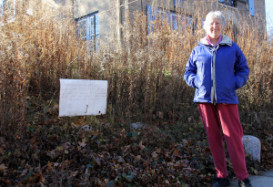
A new
article by Care2 provides a concise and well-written outline of topics you can use in the event of a Genetically Modified Organism debate, courtesy of Jeffrey Smith, the Keynote speaker at our upcoming Winter Conference. Advocates for GMO use have a lot to say about why GMOs are great for humanity, but numerous studies argue otherwise. Here are some of the highlights:
1. GMOs are unhealthy.
The American Academy of Environmental Medicine (AAEM) urges
doctors to prescribe non-GMO diets for all patients. They cite animal
studies showing organ damage, gastrointestinal and immune system
disorders, accelerated aging, and infertility. Human studies show how
genetically modified (GM) food can leave material behind inside us,
possibly causing long-term problems. Genes inserted into GM soy, for
example, can transfer into the DNA of bacteria living inside us, and
that the toxic insecticide produced by GM corn was found in the blood of
pregnant women and their unborn fetuses.
3. GMOs increase herbicide use.
Most GM crops are engineered to be “herbicide tolerant”―they defy deadly
weed killer. Monsanto, for example, sells Roundup Ready crops, designed
to survive applications of their Roundup herbicide.
Between 1996 and 2008, US farmers sprayed an extra 383 million pounds
of herbicide on GMOs. Overuse of Roundup results in “superweeds,”
resistant to the herbicide. This is causing farmers to use even more
toxic herbicides every year. Not only does this create environmental
harm, GM foods contain higher residues of toxic herbicides. Roundup, for
example, is linked with sterility, hormone disruption, birth defects,
and cancer.
5. Government oversight is dangerously lax.
Most of the health and environmental risks of GMOs are ignored by
governments’ superficial regulations and safety assessments. The reason
for this tragedy is largely political. The US Food and Drug
Administration (FDA), for example, doesn’t require a single safety
study, does not mandate labeling of GMOs, and allows companies to put
their GM foods onto the market without even notifying the agency. Their
justification was the claim that they had no information showing that GM
foods were substantially different. But this was a lie. Secret agency
memos made public by a lawsuit show that the overwhelming consensus even
among the FDA’s own scientists was that GMOs can create unpredictable,
hard-to-detect side effects. They urged long-term safety studies. But
the White House had instructed the FDA to promote biotechnology, and the
agency official in charge of policy was Michael Taylor, Monsanto’s
former attorney, later their vice president. He’s now the US Food Safety
Czar.
 8. GMOs harm the environment.
8. GMOs harm the environment.
GM crops and their associated herbicides can harm birds, insects,
amphibians, marine ecosystems, and soil organisms. They reduce
bio-diversity, pollute water resources, and are unsustainable. For
example, GM crops are eliminating habitat for monarch butterflies, whose
populations are down 50% in the US. Roundup herbicide has been shown to
cause birth defects in amphibians, embryonic deaths and endocrine
disruptions, and organ damage in animals even at very low doses. GM
canola has been found growing wild in North Dakota and California,
threatening to pass on its herbicide tolerant genes on to weeds.
 9. GMOs do not increase yields, and work against feeding a hungry world.
9. GMOs do not increase yields, and work against feeding a hungry world.
Whereas sustainable non-GMO agricultural methods used in developing
countries have conclusively resulted in yield increases of 79% and
higher, GMOs do not, on average, increase yields at all. This was
evident in the Union of Concerned Scientists’ 2009 report Failure to
Yield―the definitive study to date on GM crops and yield.
And that's only half of the list! To read the full list, go
here. If you want to hear Jeffrey Smith speak in person about the dangers of GMOs, register for our Winter Conference being held on March 3, 2012 in Manchester, CT. To learn more and to register, click
here.
Have a great afternoon!
-Melissa


































